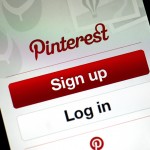
The Social Media Lowdown: How to Differentiate Your Social Media Strategy
by admin
Posted on April 08, 2014 at 15:26 PM
For some, social media is a playground of opportunity. For others, it’s the bane of their existence, where they struggle to understand the platforms, audiences, and the ever-elusive art of the perfect post. Fret not; we have some tips that may help you navigate the waters.
Facebook and Google+: ‘The Country Club Luncheon’ (rubbing elbows with important people you don’t know well)
Facebook users are now a powerful target audience. The teens have fled to other platforms while 20-somethings are happily (or begrudgingly) mingling with 50-somethings from all walks of life. Sprinkled in with snapping selfies and posting pictures of their recent trip to Disney, users are interacting with their favorite businesses in astounding new ways. Where companies used to have to pull teeth to get a simple thumbs up from their customers, they now have direct access to the very people keeping their doors open.
What we will post: Short, witty blips about awesome products or services, as well as informal, personal company stories. This is the place to talk about cool staff stories and brag about why your product/service is a cut above the competition. This will show readers that there are real people behind the brand while educating the public on what makes your company unique to the market. We will alternate between eye-popping product shots and company stories.
What we want to avoid: Stiff posts that are heavy on announcements or that don’t relate to your product or service. There’s no use posting about the newest color trends if none of the trends are featured in or on a product you sell. Save that for Twitter.
What’s the point: To get consumers interested in your brand’s particular competitive edge. We want engaged users that like and discuss the product with you and their friends. Facebook is all about brand awareness. Quality is more important than quantity here; any page administrator can buy ‘likes’ but if they aren’t interested in what you’re posting, engagement will be low anyway. A quality PPC (pay-per-click) advertising campaign can add more fans quickly while refining the reach to people who actually care about your product or service.
Pinterest/Instagram: ‘The Scrapbooking Get-Together’ (bring all your favorite photos and let’s create and trade)
Pinterest and Instagram are photo diaries, more or less. While Pinterest chronicles the wishful thinking of millions of daydreamers, Instagram chronicles the actually-happening or just-happened. They are, however, similar in that they are both photo driven and appeal to people looking to peek into the windows of companies they follow. Pinterest has become a powerful shopping tool, and one of the best sales convertors out there of all of the social media platforms.
What we will post: Your company should show off products on Pinterest in a highly visual way. If you offer services that are not easily visualized, we can implement infographics and photographic blog links, while sharing other fun shots on Instagram of staff and office antics, celebrations and selfies with your most valued customers. Professionally shot photos perform better on Pinterest than the silos as a rule, due to repinning probability. The end goal is to attach links to these photos that users will click on to find your blog or website. Instagram will attract more people who want to see personal attachment behind your brand.
What we want to avoid: Boring photos. Period. Photos with no repinning potential are nails in the coffin on Pinterest and Instagram. The brand should look fresh, colorful and unique. You should also avoid confusing Pinterest photos with Instagram photos. Pinterest is a sales tool; Instagram is a handshake and a smile.
What’s the point: Essentially, photography is one of the most shared on any platform in social media. Using these two platforms will give the brand traction with consumers looking to shop online, even if your product or service isn’t yet available for sale online, simply because they are picking out their purchases before hitting the store or call your sales team. Instagram will certainly serve as a cousin to Twitter in posts and relevance.
Twitter: ‘The Cocktail Party’ (mixing and mingling, armed with fabulous one-liners)
Twitter is a frenetic, transient platform where the extremely savvy social media conversationalist lives. These users are typically glued to their smart phones, and look to Twitter for news in pop culture, sports and real time updates from their favorite companies. Some users on Twitter are alternately not engaged at all, and never check their feeds. The art to this platform is finding the balance between frequent posting for those who aren’t on their feed all day with interesting information that isn’t redundant or boring for those who are.
What we will post: We’ll integrate photos from Pinterest and/or Instagram because these do well for retweeting purposes on Twitter. Links to your blog with witty introductions will also be employed, as well as commentary on relevant industry news. This is the place to join the conversation about subjects other than your product or service, with the eye always being on promotion of the brand. For example, a furniture retailer would do well to send tweets out that designers and potential consumers would enjoy reading, such as color trends, with links to photography of their hottest products with those featured colors used in design or staging. Links to magazine articles, news stories, etc. are also relevant here.
What we want to avoid: Redundant posts, not responding to mentions, and lack of creativity in copy. Twitter is incredibly fast-paced and if posts don’t grab a user’s attention, it will be unnoticed and buried in their news feed within minutes. Post too often with these boring posts and they’ll lose interest altogether and unfollow your company. Keep it short, keep it sweet, keep it sassy.
What’s the point: To be visible on multiple occasions to your audience. Twitter also serves as an intimate tool to converse informally and really connect your brand to users. As a rule, conversations don’t last long, but the more conversations that are had, the better the opportunity to sell.
Blog: ‘The Sit Down Dinner’ (the besties come over to hang on your every word, take your advice to heart and love to be your biggest ambassador)
Blogging is not only a critical part of search engine optimization for your brand, it’s a key part of conversation with your loyal customers. It’s no surprise that these consumers are your biggest fans, and are ready and willing to share your product and stories with their network of friends and family. Word of mouth will go a long way in building brand awareness, and blogging is an effective way of have an intimate conversation with consumers right in their living rooms.
What we will post: This is the platform to delve into detail about those awesome product or service ideas; how to transition a piece of furniture through life stages, why customers should take advantage of your uber-cool new service offering, naming live beta fish centerpieces at the company get-together after your ex-boyfriends (and the gritty details of the nasty breakups), and other juicy tidbits about your company. Keyword rich articles should be fun, flirty, and wildly witty.
What we want to avoid: Nothing’s worse than a blog that reads as dry as toast, especially for a brand looking to reach an audience who is internet savvy and social media conscious. You should also avoid posts that frankly, don’t have anything to do with your company or product. Readers will return to the blog for more reading if the topics are relevant to their searches…in other words, if only one blog is relevant for what they want to read about, why would they return to read blogs that don’t interest them later? Posting about how to cook a great soufflé (when the ultimate goal is to entice readers to buy your product) only works if the product being sold helps the reader to cook the soufflé to perfection.
What’s the point: Blogging creates a platform for brand loyalty. It’s also great exposure to Google bots who routinely (and somewhat creepily) scan and index sites for ranking. The more you talk about relevant information, the more visible they will ultimately become online. It’s a great soft-sell tool and can be leveraged for a multitude of promotions.



